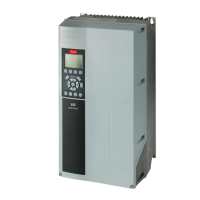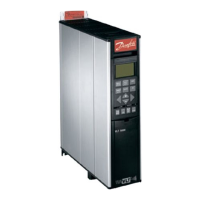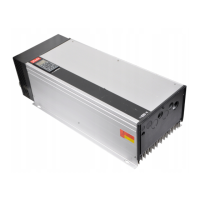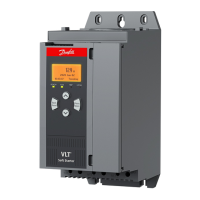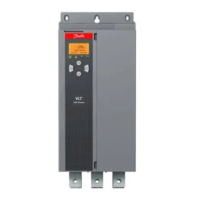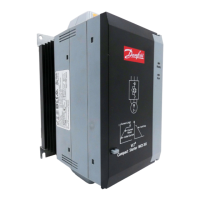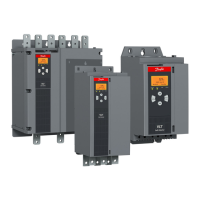[23] Set-up
select bit
0
Select set-up select bit 0 or select set-up select
bit 1 to select one of the 4 set-ups. Set
0-10 Active Set-up to multi set-up.
[24] Set-up
select bit
1
(Default digital input 32): Same as [23] Set-up
select bit 0.
[26] Precise
stop inv.
Sends an inverted stop signal when the precise
stop function is activated in 1-83 Precise Stop
Function.
Precise stop inverse function is available for
terminals 18 or 19.
[27] Precise
start, stop
Use when [0] Precise ramp stop is selected in
1-83 Precise Stop Function.
Precise start, stop is available for terminals 18
and 19.
Precise start ensures that the rotor angle from
standing still to reference is the same for each
start (for same ramp time, same setpoint). This
is the equivalent to the precise stop where the
angle that the rotor turns from reference to
standstill is the same for each stop.
When using for 1-83 Precise Stop Function [1] or
[2]:
The frequency converter needs a precise stop
signal before the value of 1-84 Precise Stop
Counter Value is reached. If this value is not
supplied, the frequency converter does not stop
when the value in 1-84 Precise Stop Counter
Value is reached.
A digital input triggers precise start, stop and is
available for terminals 18 and 19.
[28
]
Catch up Increases reference value by percentage
(relative) set in 3-12 Catch up/slow Down Value.
[29] Slow
down
Reduces reference value by percentage
(relative) set in 3-12 Catch up/slow Down Value.
[30] Counter
input
Precise stop function in 1-83 Precise Stop
Function acts as Counter stop or speed
compensated counter stop with or without
reset. The counter value must be set in
1-84 Precise Stop Counter Value.
[31] Pulse
edge
triggered
Edge triggered pulse input counts the number
of pulse flanks per sample time. This number
gives a higher resolution at high frequencies,
but is not as precise at lower frequencies. Use
this pulse principle for encoders with low
resolution (30 ppr, for example).
Pulse
Sample time
130BB463.10
Illustration 6.10 Pulse vs. Sample Time
[32] Pulse
time-
based
Time-based pulse input measures the duration
between flanks. This number gives a higher
resolution at lower frequencies, but is not as
precise at higher frequencies. This principle has
a cut-off frequency that makes it unsuited for
encoders with low resolutions (30 ppr) at low
speeds.
Speed [rpm] Speed [rpm]
Time[sec] Time[sec]a b
130BB462.10
a Low encoder resolution
b Standard encoder resolution
Illustration 6.11 Encoder Resolution
Comparison
Read Timer:
20 timer tides
Read Timer:
20 timer tides
Time Start
Time counter
Sample time
Timer
Pulse
130BB464.10
Illustration 6.12 Time Based Pulse Input
[34] Ramp bit
0
Enables a choice between one of the 4 ramps
available, according to Table 6.7.
[35] Ramp bit
1
Same as Ramp bit 0.
Preset ramp bit 1 0
Ramp 1 0 0
Ramp 2 0 1
Ramp 3 1 0
Ramp 4 1 1
Table 6.7
[40]
Latched
Precise Start
A latched precise start only requires a pulse
of 3 ms on T18 or T19.
When using for 1–83 [1] or [2]:
When the reference is reached, the
frequency converter internally enables the
precise stop signal. The frequency converter
does the precise stop when the counter
value of 1-84 Precise Stop Counter Value is
reached.
[41] Latched
Precise Stop
inverse
Sends a latched stop signal when the
precise stop function is activated in
1-83 Precise Stop Function. The latched
precise stop inverse function is available for
terminals 18 or 19.
[51] External
interlock
This function makes it possible to give an
external fault to the drive. This fault is
treated in the same way as an internally
generated alarm.
[55] DigiPot
Increase
INCREASE signal to the digital potenti-
ometer function described in parameter
group 3-9* Digital Pot.Meter
[56] DigiPot
Decrease
DECREASE signal to the digital potenti-
ometer function described in parameter
group 3-9* Digital Pot.Meter
Programming Operating Instructions
MG37A202 Danfoss A/S © Rev. 2014-07-29 All rights reserved. 63
6 6

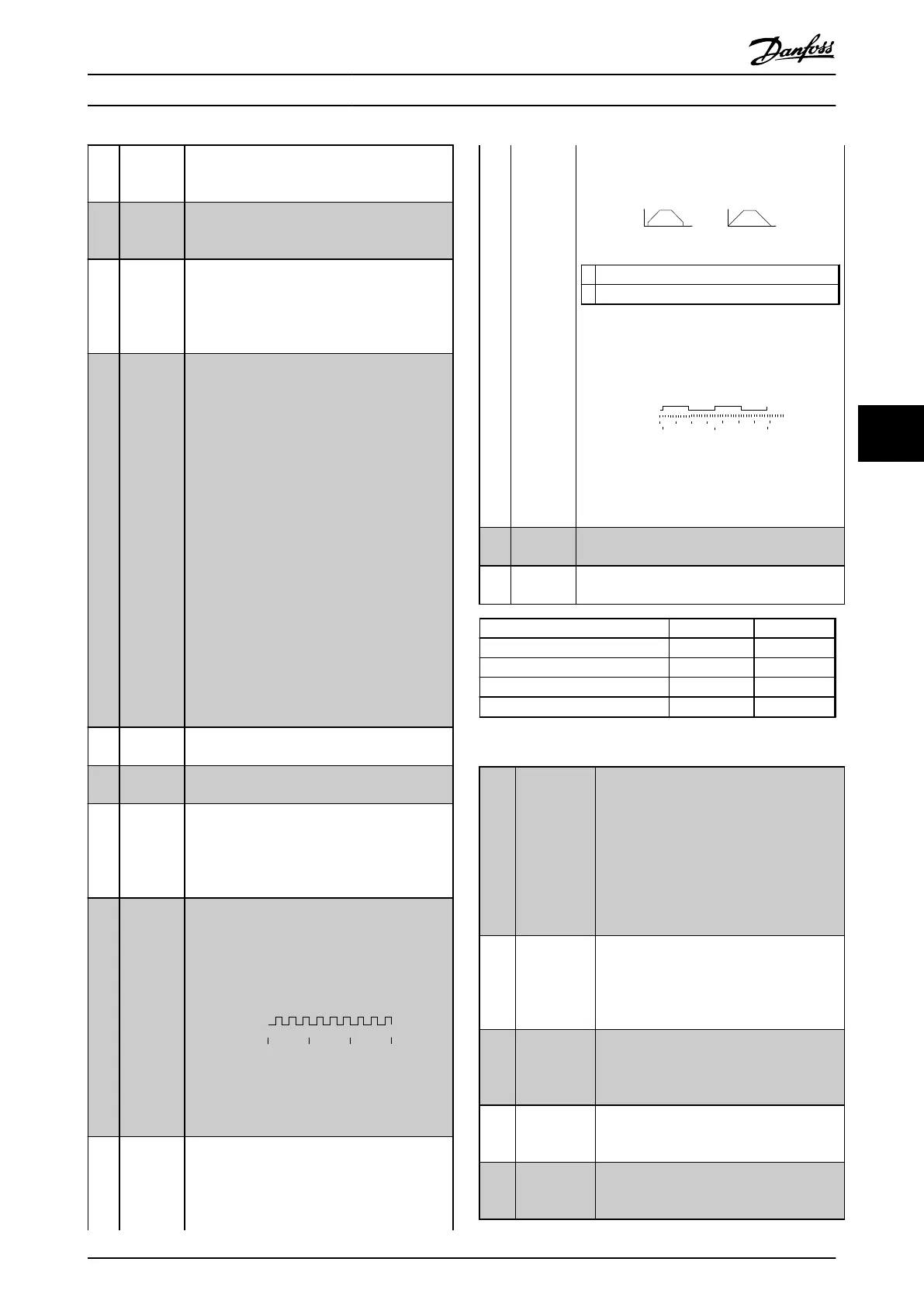